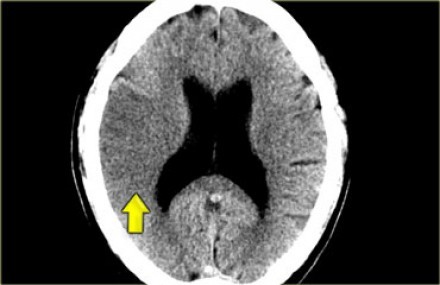February 5, 2015 - Patients with transient ischemic attacks (TIA) or nondisabling strokes in a large, prospective, multicenter study who showed evidence of acute and chronic ischemia and microangiopathy had an eight-fold increase in risk for having another stroke over the next 3 months, according to a recent study.1
Ischemia on computed tomography (CT) is associated with subsequent stroke after transient ischemic attack. The researchers designed the study to evalute whether CT evidence of acute or chronic ischemia or microangiopathy has predictive value for subsequent stroke, the researchers followed patients presenting to the emergency department who were diagnosed with TIA between October 2006 and April of 2010.
This prospective cohort study enrolled patients with transient ischemic attack or nondisabling stroke that had CT scanning within 24 hours. Primary outcome was subsequent stroke within 90 days. Secondary outcomes were stroke at ≤2 or >2 days. A total of 2028 patients were included; 814 had ischemic changes on CT. Subsequent stroke rate was 3.4% at 90 days and 1.5% at ≤2 days. Stroke risk was greater if baseline CT showed acute ischemia alone (10.6%), acute+chronic ischemia (17.4%), acute ischemia+microangiopathy (17.6%), or acute+chronic ischemia+microangiopathy (25.0%).

Soucre: Radiology Assistant. Brain Ischemia - Imaging in Acute Stroke. Majda Thurnher, Department of Radiology, Medical University of Vienna.http://www.radiologyassistant.nl/en/p483910a4b6f14/brain-ischemia-imaging-in-acute-stroke.html
Excluded from the analysis were patients with neurological deficits more than 24 hours after presentation, those who lost consciousness during the event, patients who received tPA, and those with an obvious other cause for deficit, such as hypoglycemia, seizure, electrolyte imbalance, or migraine.
The analysis used logistic regression to find that patients with evidence of acute ischemia alone, acute+chronic ischemia, acute ischemia+microangiopathy, or acute+chronic ischemia+microangiopathy had a threefold (2.61, 95%), five-fold (5.35, 95%), five-fold (4.90, 95%), and an eight-fold (8.29, 95%) greater risk of stroke, respectively, when compared with patients without similar findings.
The researchers concluded that in patients with TIA/nondisabling stroke, CT evidence of acute ischemia alone or acute ischemia with chronic ischemia or microangiopathy was associated with increased subsequent stroke risk within 90 days.
Study: Wasserman JK1, Perry JJ2, Sivilotti ML1. Computed tomography identifies patients at high risk for stroke after transient ischemic attack/nondisabling stroke: prospective, multicenter cohort study. Stroke. 2015 Jan;46(1):114-9. doi: 10.1161/STROKEAHA.114.006768. Epub 2014 Dec 4.




